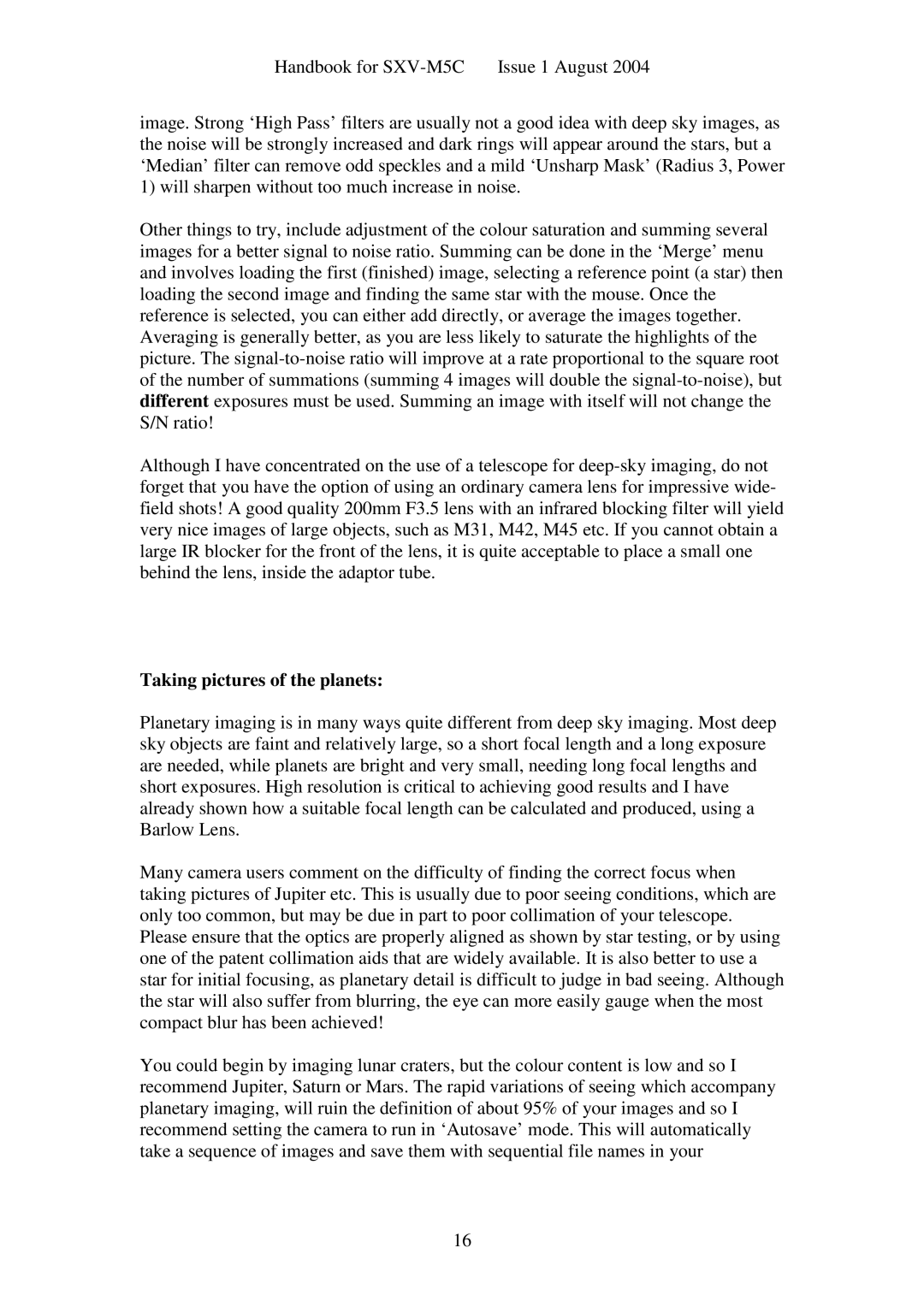Handbook for
image. Strong ‘High Pass’ filters are usually not a good idea with deep sky images, as the noise will be strongly increased and dark rings will appear around the stars, but a ‘Median’ filter can remove odd speckles and a mild ‘Unsharp Mask’ (Radius 3, Power 1) will sharpen without too much increase in noise.
Other things to try, include adjustment of the colour saturation and summing several images for a better signal to noise ratio. Summing can be done in the ‘Merge’ menu and involves loading the first (finished) image, selecting a reference point (a star) then loading the second image and finding the same star with the mouse. Once the reference is selected, you can either add directly, or average the images together. Averaging is generally better, as you are less likely to saturate the highlights of the picture. The
Although I have concentrated on the use of a telescope for
Taking pictures of the planets:
Planetary imaging is in many ways quite different from deep sky imaging. Most deep sky objects are faint and relatively large, so a short focal length and a long exposure are needed, while planets are bright and very small, needing long focal lengths and short exposures. High resolution is critical to achieving good results and I have already shown how a suitable focal length can be calculated and produced, using a Barlow Lens.
Many camera users comment on the difficulty of finding the correct focus when taking pictures of Jupiter etc. This is usually due to poor seeing conditions, which are only too common, but may be due in part to poor collimation of your telescope. Please ensure that the optics are properly aligned as shown by star testing, or by using one of the patent collimation aids that are widely available. It is also better to use a star for initial focusing, as planetary detail is difficult to judge in bad seeing. Although the star will also suffer from blurring, the eye can more easily gauge when the most compact blur has been achieved!
You could begin by imaging lunar craters, but the colour content is low and so I recommend Jupiter, Saturn or Mars. The rapid variations of seeing which accompany planetary imaging, will ruin the definition of about 95% of your images and so I recommend setting the camera to run in ‘Autosave’ m ode. This will automatically take a sequence of images and save them with sequential file names in your
16
